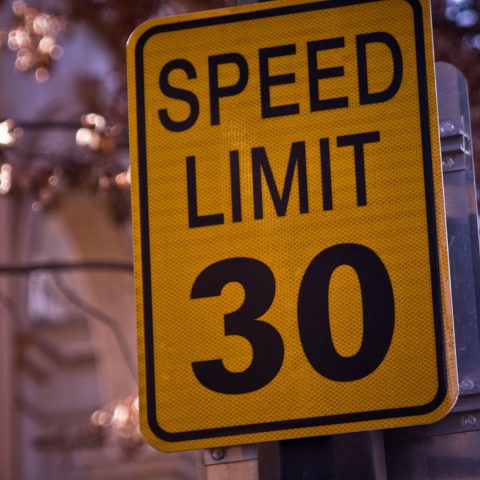On benefits and reasons for introducing 30 km/h speed limits in cities
There has been much talk in recent weeks about the decision of the municipality of Bologna, that aims to become the first major 30 km/h city in Italy, with the transformation expected to be completed by 2024. The new traffic plan, called Bologna Città 30, seeks to create calmer, safer, and more livable streets by implementing a […]

There has been much talk in recent weeks about the decision of the municipality of Bologna, that aims to become the first major 30 km/h city in Italy, with the transformation expected to be completed by 2024. The new traffic plan, called Bologna Città 30, seeks to create calmer, safer, and more livable streets by implementing a maximum speed limit of 30 km/h on 90% of the perimeter of the most densely populated part of the city.
“The first concept of ‘Zone 30’ started in the Netherlands in the early 1970s, when a group of parents blocked a whole neighbourhood to demand that no more children die in car crashes” Matteo Dondé, an Italian architect and urban planner, told Euronews.
Cuts in speed limit of up to 50% have been introduced In the last two years in Paris, Brussels, London, Copenhagen and cities across Spain. Grenoble and Edinburgh adopted the same model. And over 380 German cities want to make it easier to establish 30 km/h zones. But the list can continue.
This article was published in our newsletter Next Stop.
Every end of the week, we try to help giving a better perspective on what is going on in the mobility world. Trying to anticipate which will be the NEXT STOP
Can check the newsletters’ archive HERE.
And sign up HERE
30 km/h cities: making streets safer
Safety is usually mentioned as the top priority (and top achievement) of the 30km/h limits model.
According to data recently released by Transport for London, “collisions involving a vulnerable road user have decreased by 36 per cent, while collisions resulting in death or serious injury have decreased by 25 per cent after speed limits were lowered. People hit by a vehicle at 20mph are around five times less likely to be killed than at 30mph”.
The General Directorate of Traffic (DGT) in Spain stated that the probability of dying in a pedestrian accident decreases to 15% when struck at 30 km/h, compared to 85% at 50 km/h.
The European Data Journalism Network quotes Magdalena Markovic, the press referee of the Graz city council (where a 30 km/h speed limit has been in force since 1992): she “argues that the biggest advantage of the change is achieving safer transportation in the city. Already in the first two years of the policy, the number of traffic accidents decreased by 25 percent. As there were no other policy changes regarding safe transportation in the same time period, the success is obviously due to the 30 km/h rule”.
In Helsinki, “In places where the speed limit was changed from 40 km/h to 30 km/h pedestrian injuries decreased by 19 percent and vehicle damages by 34 percent. The biggest improvement was observed in the city centre, where the number of traffic-related injuries decreased by 42 percent”, still according to information quoted by the European Data Journalism Network.
However, a study indicates: “Do not extend the reduction of the speed from 50 km/h to 30 km/h to all streets”. The reason is simple: “A higher speed will help to redirect motor traffic to those areas with less pedestrian traffic and less inhabited”, thus lowering traffic pressure on densely inhabited areas.
The already-mentioned article by European Data Journalism Network notes that “None of the European cities that lowered the speed limit to 30 km/h regrets it”.
Reasons for 30 km/h speed limit go far beyond safety
At the 3rd UN Global Conference on Road Safety, held in 2020, the Academic Expert Group recommends the implementation of a 30 km/h speed limit for all mixed-use roads within urban areas. It’s not just a matter of fatalities’ figures, it has to do with the dramatic change of mobility behaviors, that “will seeincreasing numbers of pedestrians, cyclists and electric micromobility users on our streets. This will require a redoubling of efforts to allocate space for protected cycling and pedestrian infrastructure and create mixed use roads with low speed limits”.
Promoting sustainable transportation is facilitated by lower speeds, encouraging modes such as walking and cycling (30 km/h limits enables for the narrowing of streets. Gained areas can be used for green spaces or bicycle lanes). And slower speeds create a more equal environment, with areas more accessible to everyone, including children, the elderly, and individuals with disabilities.
Also to be considered: noise reduction, which is among the goals set by the city of Zurich. Where, “After the implementation of the final step, it is expected that, of the 140,000 residents, 28% will be protected from harmful noise levels during the day, while 17% will be protected at night”







